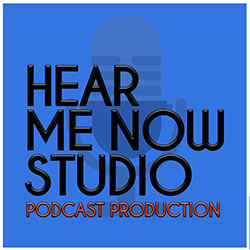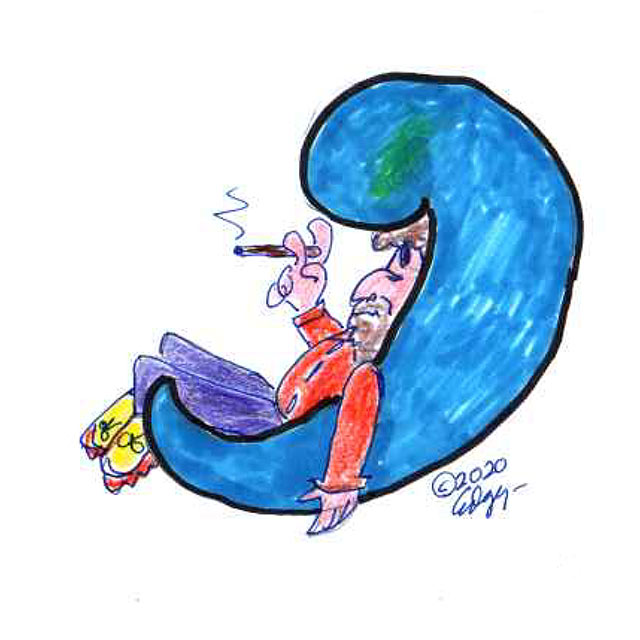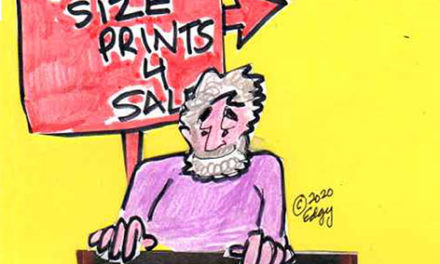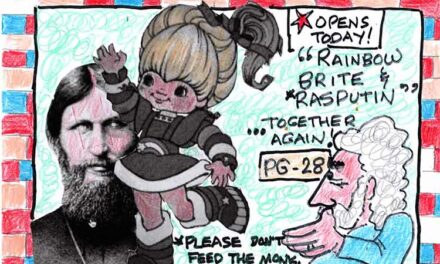Indigenous Peoples’ Day: Long Overdue (and Nicely Punctuated)
Apostrophizing past apocalypses
By Ed Goldman
After all, the holiday commemorates peoples, not just one subset of people, therefore requiring that the apostrophe follow the “s.”
Apostrophe Apostle Chillin’
For example, if you ask most people where to place the apostrophe when you wish to merely denote something owned by Columbus—like the Native Americans enslaved and otherwise mistreated by this toady to the king and queen of Spain—I’ll wager they’d say it should be “Columbus’ slaves” rather than “Columbus’s slaves.”
“Columbus’ slaves” is wrong—not as wrong as what this repugnant explorer did to human beings, of course, not even close—but it also implies that the name “Columbus” is plural, as though each member of his family was a Columbu.
This is just stupid. You don’t hop a midtown “bu” to go see a three-ring “circu,” do you? (Brooklyn readers: I know you’d like for me to have ended that sentence with ”do youse?” but I’m in an educational mood today since most schools are closed.)
Pluralizing formal names has always been a dilemma. (If you’re not paying attention, you might have thought “has been a dilemma” should have been “have been a dilemma” because it follows a plural noun. No, no, no!)
Examples of pluralizing predicaments:
-I drive an 18-year-old Mercedes E-320 and have owned two other, older models of the car (a 1996 E-320 and a 1997 C-220). But I never say I owned two other “Mercedeses” because that word makes it looks as though my keyboard froze. So I usually just say “I’ve owned more than one Mercedes” whether people ask me or not. I think it’s a good icebreaker at hockey games and street protests.
-A number of years ago, a local institution in Sacramento, Corti Brothers market, opened two other relatively short-lived branches. When asked, “Which Corti Brothers is your favorite?”, some people—knowing that the founders of the markets were brothers Frank and Gino Corti—could become befuddled if you were to answer, “Gino.” This would be an appropriate reply had you been asked, “Which Corti brother is your favorite?” Not the use of the singular and lowercase usage for “brother” though lower case is difficult to suggest aloud.
I should point out that there are modern detractors to this admittedly silly obsession of mine. On my side is Strunk & White’s Elements of Style, a book that came out 97 years ago and remains the gold standard for most usage dilemmas. Its two authors—William Strunk, an English professor at Cornell University, and his acolyte, E.B. White (of “Charlotte’s Web” fame)—are still revered by old-school journalists and English teachers.
Even so, on the website called grammarphobia.com, you’ll find this innocent inquiry and absolutely heretical reply:
“Q: What is correct James or James’s?
“A: James’s car or James’ car? Actually, both ways are correct. If a proper name ends with an s, you can add just the apostrophe or an apostrophe and an s.”
I think I’ll go have a Grey Goose vodka martini. Maybe even two, which I suppose should be called Grey Geese, since you’re not going to catch me saying I had two Gray Gooses.
Ed Goldman's column appears almost every Monday, Wednesday and Friday. A former daily columnist for the Sacramento Business Journal, as well as monthly columnist for Sacramento Magazine and Comstock’s Business Magazine, he’s the author of five books, two plays and one musical (so far).














